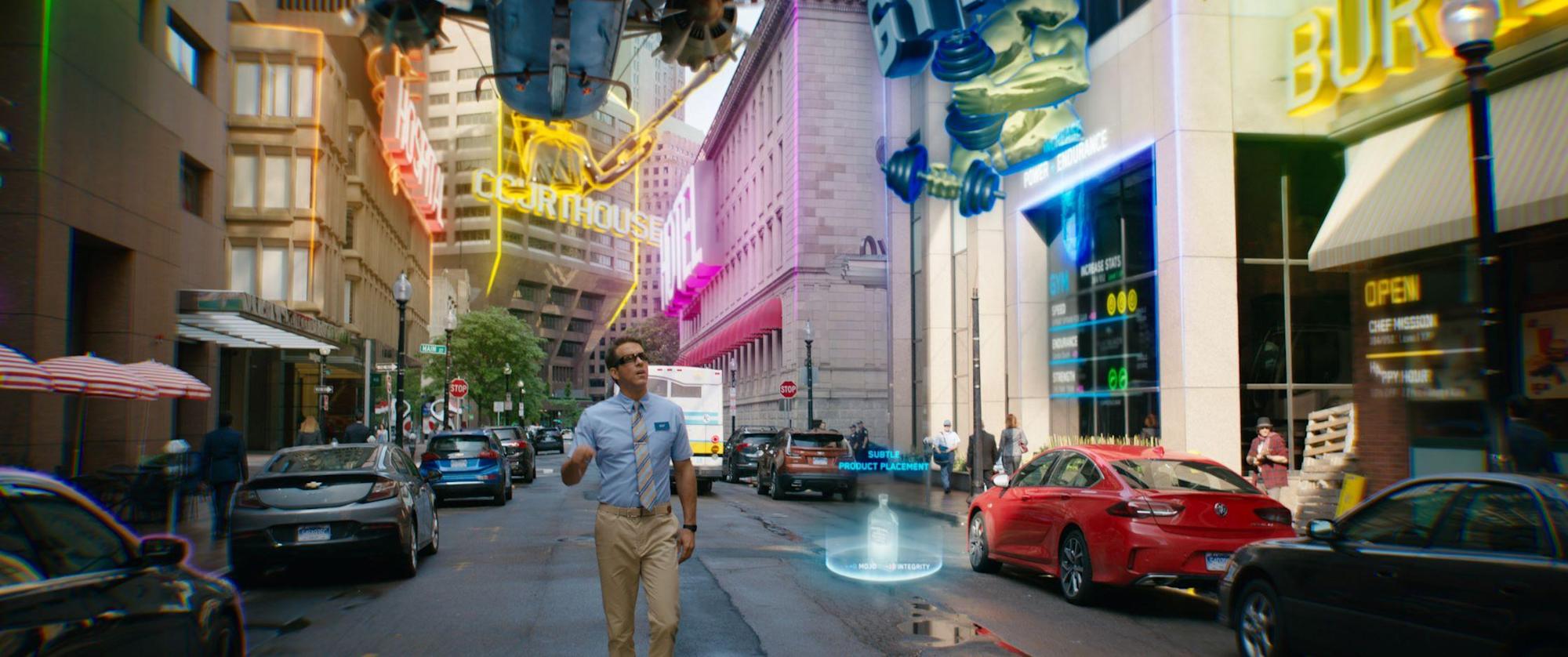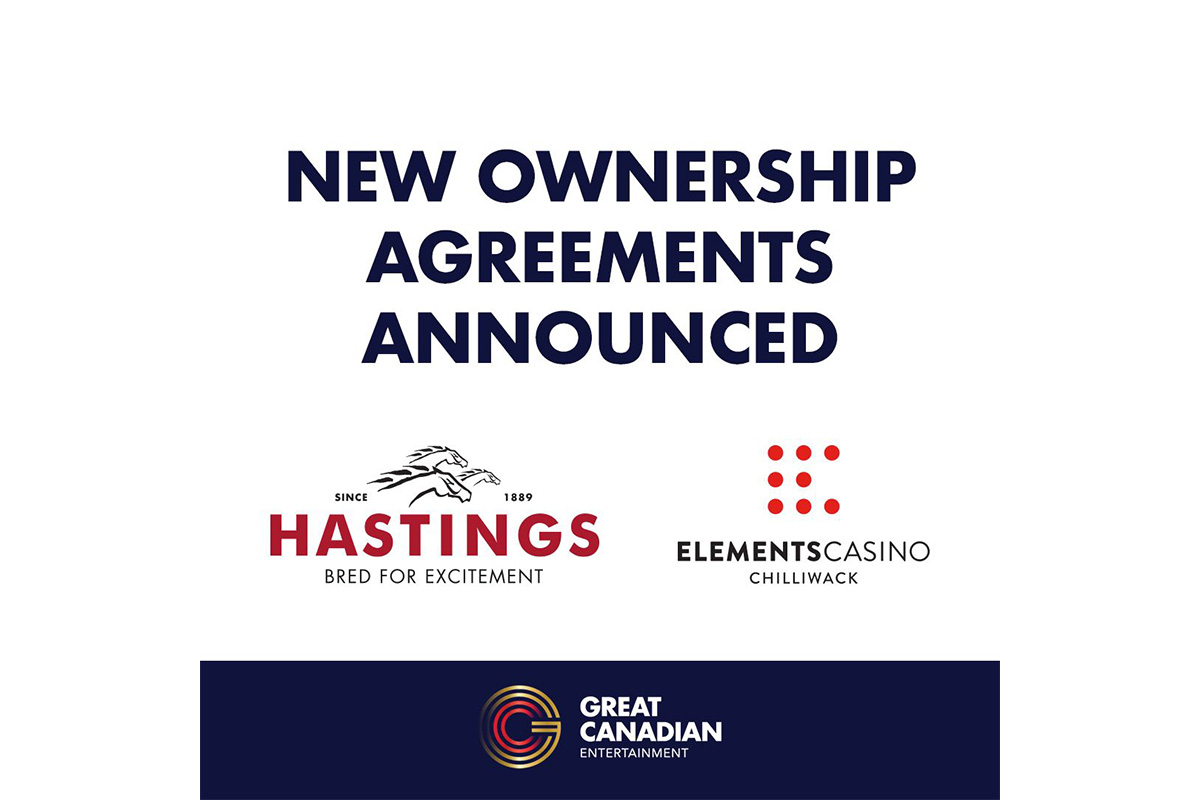Canada
How Digital Domain Turned the World into a Video Game for ‘Free Guy’

In 20th Century Studios’ Free Guy, the lines between real and digital are deliberately blurred, with the focus jumping between live-action and CG based on the point of view of the characters. For the filmmakers, it was like creating two movies in one, each requiring different techniques, from replacing actors with digidoubles to creating entire CG cities. With only a handful of visual effects studios in the world capable of doing it all, 20th Century Studios turned to veteran VFX house and Oscar® winner, Digital Domain.
“We worked closely with Shawn Levy and the filmmakers to essentially create Free City twice, once by augmenting live-action footage with digital additions, and again as a fully CG environment right out of a video game,” said Nikos Kalaitzidis, Digital Domain VFX supervisor. “There’s really nothing else out there that is quite like it, and that allowed us to do things we’ve never done before.”
The Two Sides of Free City
Free Guy begins with a live-action introduction to the metropolis of Free City, as one of the game’s top players makes his dramatic entrance. As the character “BadAss” plummets toward the city, filmmakers used a combination of digital and practical effects, beginning with footage of the actor in a wire harness suspended by a retractable crane. BadAss soon turns his descent in a low-opening skydive, featuring a CG parachute, landing perfectly in a waiting convertible supercar. To make the transition from the fall to the landing, artists at Digital Domain created digidoubles of the actor, making an otherwise impossible stunt seem natural.
As the car speeds off into Free City, the filmmakers used a multi-camera rig and a crane on the car itself to film on the streets of Boston and against green screens. Digital Domain took that real footage of the car, the actor and the actress in the passenger seat, and created a new set of digi-humans for each performer, along with a CG model of the car. They then switched between live-action and digidoubles as the car dodges grenades, crowds, trees, motorbikes and more, all added by Digital Domain. Using a combination of live city footage with plates and CG buildings, the scene then pans up and through the window of the film’s protagonist Guy (Ryan Reynolds), as he awakes blissfully unaffected by the insanity around him.
Digital Domain began with previsualization, providing the filmmakers with multiple iterations of the city and what the world in general looked like, from both the live-action and game sides. Once Guy begins to gain notoriety, players frequently see his avatar wandering through the digital version of Free City. To create the game setting, Digital Domain used the previs assets, and built over 89 3D environments, created from modular buildings, then altered with different textures and materials. Artists then added individual flourishes by hand to replicate and stylize the real-world locations, including storefronts, residential and commercial buildings and more.
Mixing Worlds
To populate the digital version of Free City, Digital Domain created digital versions of many of the characters, including Guy. To create the digital protagonist, Reynolds went to Digital Domain’s motion capture stages, where the actions for his movements were recorded and added to a library. He participated in a series of facial scans, all of which were combined to create a game-version of Guy that was similar to Reynolds, but slimmed down and stylized.
With Guy’s legend growing, the two worlds blur more and more, leading to a confrontation at a construction site. As two players sent by the developers – one dressed as a pink bunny, the other as a cop – chase Guy into an unfinished skyscraper, Digital Domain created both the interior and exterior of the building. The actors then performed in front of green screens and physical set pieces, allowing the filmmakers to create a superhuman chase.
As the action progresses upward, Guy jumps from floor to floor with inhuman ability, dodging weapons fire throughout. To allow Guy to move with unnatural movement, Digital Domain introduced a digidouble of Reynolds, while also adding additional props and environmental damage to fill out the scene. The environment then begins to morph thanks to the machinations of the game’s programmers. Digital Domain then ensured the shifting building retained the proper scale against the actors, while artists continually adjusted the lighting and textures. Guy eventually reaches the top of the building, where drone and helicopter footage was used to convey the sense of movement. It also gave a foundation for the live-action world outside, which was altered to reflect the fictional city’s skyline.
After falling from the building, Guy selects a “bubble suit,” which allows him to bounce safely – if awkwardly – toward the ground. To create the scene, the filmmakers used a stunt performer on wires positioned against a green screen for close shots, and a digidouble version of Reynolds for the wide shots and the more extreme bounces. Reynolds himself was then filmed in a prop bubble to show Guy after reaching the ground. The footage was then combined with recordings of a fast descent captured by a drone.
Digital Domain also helped to create Free City’s “Multiplayer Lounge,” a location where avatars can mingle, explore in-game weapons and watch feeds of the game world on large jumbotron screens. The multi-story structure regularly features dozens of players, all of which were recorded separately against a blue screen and added later by Digital Domain. The footage of the game – including a memorable moment when the live-action Guy sees a digital version of himself – were also provided by the VFX studio.
Along with the digital version of the main actors, Digital Domain also created an additional 46 3D hero and background assets to help populate Free City.
The End of the World
When Guy grows too popular, the developers decide to reboot the game and start over. The sequence needed a unique look that still honored the game motif, so Digital Domain went back in time. Artists referenced low-res texture mapping and glitches from 80s video games.
The deletion of the world was completed using a relatively new technique known as “data-moshing,” where movement in one layer of footage is applied to another. The result is a scene that looks as if a digital video has been pixelated and damaged. To create this effect, Digital Domain used Houdini to render low-res texture maps, while combining it with Nuke. After a psychedelic final swirl, the world disappears, leaving a white void where only Guy remains.
Rebuilding Actors
Along with the traditional digidouble work and animated characters, Free Guy also marks one of the first feature film uses of Digital Domain’s proprietary face-swapping tool, Charlatan. Utilizing neural networks, Charlatan takes existing footage and analyzes the movements down to the minutia. Artists then introduce a new face digitally constructed by hand, and the neural network in Charlatan matches it with the existing footage, replacing the original performance. Artists can then alter the facial movements to incorporate new expressions.
Late in the film, BadAss gives a speech with far-reaching implications. It’s vital to the plot and tone, and after seeing the finished results, the filmmakers decided that they needed to change the dialogue and add to it for the scene to have the necessary impact. Rather than schedule a new series of reshoots and force the actor back to read a handful of lines, various methods of animating the digital character were employed, with none producing a realistic and acceptable result. So Digital Domain decided to try Charlatan.
Artists created a new facial model of BadAss by hand, then used Charlatan to combine it with the original performance. Once the neural network was able to link the two and replace the original animation, the results were a more realistic digital avatar that could then mimic the actor’s facial mannerisms and movements to mimic reading the new lines. The actor then later recorded the new dialogue in ADR.
“Free Guy was an ambitious project that required expertise in multiple techniques and disciplines to make it. And that’s exactly what Digital Domain was built for,“ said John Fragomeni, global VFX president at Digital Domain. “We worked closely with the filmmakers to help create a unique look and feel for the live-action world of Free City and the gameplay world, and we think audiences are going to be blown away by what they see.”
Free Guy is in theaters now.
Powered by WPeMatico
Canada
Group from Ts’elxwéyeqw Tribe and Great Canadian Entertainment Announce Agreement for the Acquisition of Elements Casino Chilliwack

Great Canadian Entertainment and a consortium group of certain communities from the Ts’elxwéyeqw Tribe, through an entity affiliated with Ts’elxwéyeqw Tribe Management Ltd. (the “Ts’elxwéyeqw Group”), announced that on November 7th, 2025, they entered into a definitive agreement for the purchase by the Ts’elxwéyeqw Group from Great Canadian Entertainment of Elements Casino Chilliwack, one of the premier gaming and entertainment destinations in the Fraser Valley region of British Columbia.
The Ts’elxwéyeqw Tribe constitute seven First Nation communities and are the First People of the Chilliwack River watershed. The transaction represents a transformational milestone for the communities within the Ts’elxwéyeqw Group.
Elements Casino Chilliwack serves guests across the Fraser Valley and is Chilliwack’s top destination for gaming and entertainment, featuring over 300 slots, live and electronic table games, bingo, dining, live entertainment and more.
The closing of the transaction remains subject to customary closing conditions and the receipt of regulatory and other approvals. Under the terms of the definitive agreement, Great Canadian Entertainment will continue to provide transitional services and support to the Ts’elxwéyeqw Group for a period following closing.
“This purchase marks an exciting milestone for our Nations and for the entire territory. By coming together in partnership, we are not only investing in a strong business opportunity, but also in the future of our people. The revenues generated through this acquisition will help strengthen our communities, create new opportunities, and ensure our Nations continue to play a leading role in the local economy. Additionally, we believe that local community-based ownership of Elements Casino Chilliwack will further strengthen the broader Fraser Valley community and economy. It’s a proud moment that reflects how Indigenous leadership and collaboration can build a stronger, more inclusive future for everyone,” said Chief David Jimmie, Chief of Squiala First Nation and President of Ts’elxwéyeqw Tribe Management Ltd.
“We are very excited to have entered into this agreement with the Ts’elxwéyeqw Group. We have had the privilege of being part of the Chilliwack community since we opened Elements Casino Chilliwack in 2012, and we believe that under the Ts’elxwéyeqw Group’s stewardship, the business will begin an exciting new chapter. For the team members and guests of Elements Casino Chilliwack, and the local community, we can think of no better owner for the business. We look forward to the closing and then working with the Ts’elxwéyeqw Group team during the transition period,” said Matt Anfinson, CEO of Great Canadian Entertainment.
McCarthy Tétrault LLP is acting as legal advisor and KPMG Corporate Finance Inc. is acting as financial advisor to the Ts’elxwéyeqw Group. McMillan LLP is acting as legal advisor to Great Canadian Entertainment.
The post Group from Ts’elxwéyeqw Tribe and Great Canadian Entertainment Announce Agreement for the Acquisition of Elements Casino Chilliwack appeared first on Americas iGaming & Sports Betting News.
BetVictor
Canadian iGaming Growth Trends 2025: Data, Strategy, and the Brands Defining the Market

Reading Time: 2 minutes
The Canadian iGaming market has evolved from an emerging opportunity into one of the most competitive and innovative digital gaming arenas worldwide. Ontario’s regulated framework has paved the way for rapid expansion, attracting established international operators alongside ambitious newcomers that are carving out share through brand differentiation and data-driven acquisition.
Methodology: How Growth Was Measured
To understand which casino brands are gaining momentum and why, the award-winning Mr. Gamble Casino Trends Meter—a proprietary performance index powered by Semrush, Ahrefs, in-house click tracking, market benchmarks, and predictive analytics—analyzed year-over-year (YoY) performance from January–June 2024 versus January–June 2025. The results point to a vibrant, fiercely competitive landscape where execution, trust, and experience are the real drivers of sustained growth.
Brands Showing Standout Growth in 2025
Strong outperformance highlights different paths to scale
Wild Tokyo posted an extraordinary +134% YoY, showing how bold branding, a distinctive identity, and targeted acquisition can resonate with players seeking unique experiences. Clean yet edgy design, paired with robust SEO execution and engagement programs, helped the brand cut through a crowded market.
LuckyDays delivered +110% YoY by striking a balance between simplicity and substance. A minimalistic UX, a vast game library, and strong affiliate relationships have positioned it as a trusted destination for Canadian players.
BetVictor, a legacy operator with deep roots, recorded +107% YoY. Its evolution from traditional bookmaker to diversified iGaming powerhouse underscores how credibility and adaptability can translate into modern growth.
Agile mid-tier brands are also accelerating: SlotsMagic at +94% and Betibet at +88% demonstrate how focused SEO, analytics-led decision making, and smart promotional strategy can punch above weight.
Crypto-forward momentum and broader market depth
The joint rise of BetFury and SmokAce—both at +74%—signals growing acceptance of crypto and blockchain-based gaming among Canadian users, driven by transparency, fast payments, and a tech-forward ethos.
Meanwhile, Paripesa, Mond, and ComeOn maintained robust double-digit YoY growth, underscoring the market’s depth and diversity beyond a handful of headline names.
Market Maturity: Compliance, Trust, and UX Win
As more provinces explore regulated frameworks modeled on Ontario, competition is intensifying. The brands pulling ahead are those investing in compliance, transparency, and player satisfaction—prioritizing product quality and retention over short-term promotions.
“Players are becoming more selective, more informed, and more focused on trust,” says Paul Puolakka, CMO at Mr. Gamble. “We’re seeing a clear shift toward quality brands that prioritize experience, safety, and innovation—the ones achieving real, sustained growth.”
Puolakka adds: “Data doesn’t just tell us who’s growing—it shows us why. The operators succeeding in Canada are those that deeply understand their audience, use insights effectively, and build long-term value instead of chasing short-term hype.”
Trends Shaping the Next Phase of iGaming in Canada
- Branding + data-led acquisition let emerging brands challenge incumbents more effectively than ever.
- Crypto-friendly casinos are moving from niche to mainstream consideration for Canadian users.
- SEO, content strategy, and affiliate partnerships remain reliable, capital-efficient growth levers.
- Compliance, transparency, and UX are central to sustainable market share gains.
Looking Ahead
The fastest-growing casino brands capture more than impressive statistics—they reflect a market in transformation. With Wild Tokyo setting creative benchmarks and veterans like BetVictor and ComeOn proving that brand equity still matters, Canada’s iGaming sector is entering a phase defined by intelligent growth, regulatory maturity, and player empowerment.
As the industry continues to evolve, the Mr. Gamble Casino Trends Meter remains a useful compass for players, affiliates, and operators navigating this fast-changing landscape.
The post Canadian iGaming Growth Trends 2025: Data, Strategy, and the Brands Defining the Market appeared first on European Gaming Industry News.
Canada
Ezugi partners with PokerStars to further extend live casino game choice for players

Reading Time: 2 minutes
Ezugi, an innovative live dealer casino supplier known for pushing the boundaries of live gaming, retention, and distribution solutions, is proud to announce a new partnership with PokerStars, the world’s largest online poker site.
Through this partnership, PokerStars’ players in the UK and Ontario will gain access to Ezugi’s standout portfolio, including Revolution Roulette, Ultimate Roulette, Unlimited Blackjack and Lucky 7 online casino games.
PokerStars, launched in 2001, is one of the world’s leading online poker and casino brands and operates as part of Flutter Entertainment. It has grown to become the largest poker site globally, offering the widest selection of online games and hosting prestigious live tournaments.
Formed in 2012, Ezugi is a global live casino provider with a focus on meeting operator and player needs with best-of-breed localised content. The Ezugi games portfolio includes a wide range of live dealer games, many of which are unique. Ezugi became part of Evolution in 2018 and continues to build on its reputation for providing unique and innovative games and solutions for online casino and retail betting shop operators.
Gilad Ben-Ami, Chief Executive Officer at Ezugi, said: “PokerStars’ players already enjoy a wide range of live casino and online slot games from Evolution brands such as Evolution, NetEnt, Red Tiger and Big Time Gaming. Now Ezugi is delighted and honoured to add even more choice for PokerStars’ players with our own innovative games.”
Ben-Ami continued: “The release of Ezugi games to PokerStars clearly demonstrates the rich variety and innovative features of the Ezugi games portfolio. Ultimate Roulette is a unique multiplier Roulette that blends circus-themed fun and TV game show excitement; Revolution Roulette puts a unique spin on classic Roulette by adding special multiplier pockets to the wheel; Unlimited Blackjack allows an unlimited number of players to play at the table, while also featuring Auto-Split functionality and a choice of four side bets – Perfect Pairs, 21+3, Perfect 11 and Ten20; and Lucky 7 is a very popular game with its origins in the Indian subcontinent – a fast-paced, simple and exciting Hi-Lo card game.”
Ben-Ami concluded: “We are confident that PokerStars’ players will love playing these games and we look forward to adding more Ezugi titles for them in the future.”
The post Ezugi partners with PokerStars to further extend live casino game choice for players appeared first on European Gaming Industry News.



